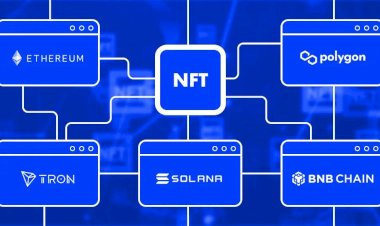AI Integration in Web Development 2025: How Artificial Intelligence is Transforming Modern Websites
23 May 2025
Artificial Intelligence has fundamentally transformed web development, moving from experimental features to essential components of modern websites. In 2025, AI integration in web development has become more accessible, powerful, and necessary for creating competitive digital experiences. This comprehensive guide explores how developers can leverage AI technologies to build smarter, more efficient, and user-centric web applications.
The Current State of AI in Web Development
The integration of AI in web development has evolved from simple chatbots to sophisticated systems that can predict user behavior, generate content, optimize performance, and automate complex development tasks. Modern web applications now incorporate machine learning algorithms, natural language processing, computer vision, and predictive analytics to deliver personalized and intelligent user experiences.
The democratization of AI tools and APIs has made it possible for developers of all skill levels to integrate powerful AI capabilities into their web projects without requiring deep machine learning expertise.
Key AI Technologies Transforming Web Development
Machine Learning and Predictive Analytics
Machine learning algorithms analyze user behavior patterns to predict future actions, enabling websites to proactively serve relevant content and recommendations. E-commerce sites use ML to suggest products, while content platforms leverage it to curate personalized feeds.
Implementation Areas:
- User behavior prediction
- Dynamic content recommendations
- Fraud detection and security
- Performance optimization
- A/B testing automation
Natural Language Processing (NLP)
NLP enables websites to understand, interpret, and generate human language, powering everything from chatbots to content analysis and sentiment monitoring.
Key Applications:
- Intelligent chatbots and virtual assistants
- Content summarization and generation
- Language translation services
- Sentiment analysis for user feedback
- Voice search optimization
Computer Vision and Image Recognition
Computer vision allows websites to analyze and understand visual content, enabling features like automatic image tagging, visual search, and augmented reality experiences.
Popular Use Cases:
- Automatic image categorization and tagging
- Visual search capabilities
- Content moderation and filtering
- Augmented reality features
- Accessibility improvements through image description
Conversational AI and Chatbots
Advanced conversational AI systems provide human-like interactions, handling customer service, lead generation, and user guidance with increasing sophistication.
Modern Capabilities:
- Context-aware conversations
- Multi-language support
- Integration with business systems
- Voice interaction capabilities
- Emotional intelligence and sentiment recognition
Popular AI Tools and Platforms for Web Developers
OpenAI APIs and GPT Integration
OpenAI's suite of APIs, including GPT models, enables developers to integrate powerful language processing capabilities into web applications.
Key APIs:
- GPT-4 API: Advanced text generation and conversation
- DALL-E API: AI-powered image generation
- Whisper API: Speech-to-text conversion
- Embeddings API: Text similarity and search
Implementation Examples:
- Content generation and editing tools
- Code documentation automation
- Customer support chatbots
- Creative writing assistants
Google AI and Cloud ML Services
Google Cloud's AI platform offers comprehensive machine learning services that integrate seamlessly with web applications.
Notable Services:
- Dialogflow: Conversational AI platform
- Vision AI: Image and video analysis
- Natural Language AI: Text analysis and understanding
- Translation AI: Real-time language translation
- AutoML: Custom model training without coding
Microsoft Azure Cognitive Services
Azure provides a comprehensive suite of AI services designed for easy integration into web applications.
Core Services:
- Azure Bot Service: Intelligent chatbot development
- Computer Vision: Image analysis and OCR
- Text Analytics: Sentiment analysis and key phrase extraction
- Speech Services: Speech-to-text and text-to-speech
- Personalizer: Dynamic content personalization
Amazon Web Services AI Services
AWS offers scalable AI services that handle everything from simple text analysis to complex machine learning workflows.
Key Offerings:
- Amazon Lex: Conversational interfaces
- Amazon Rekognition: Image and video analysis
- Amazon Comprehend: Natural language processing
- Amazon Polly: Text-to-speech service
- Amazon Personalize: Real-time recommendations
Practical AI Implementation Strategies
AI-Powered Personalization
Modern websites use AI to create unique experiences for each user based on their behavior, preferences, and demographic information.
Implementation Approaches:
- Dynamic content delivery based on user profiles
- Personalized product recommendations
- Adaptive user interfaces that evolve with usage
- Customized email marketing campaigns
- Behavioral targeting for advertisements
Intelligent Search and Discovery
AI enhances website search functionality by understanding user intent, handling natural language queries, and providing relevant results even with typos or ambiguous terms.
Advanced Features:
- Semantic search capabilities
- Auto-complete and query suggestions
- Visual search integration
- Voice search optimization
- Contextual result ranking
Automated Content Generation
AI can generate various types of content, from product descriptions to blog posts, helping maintain fresh and relevant website content.
Content Types:
- SEO-optimized blog articles
- Product descriptions and reviews
- Social media posts
- Email marketing content
- Meta descriptions and titles
Smart Form Processing
AI transforms traditional form interactions by providing intelligent validation, auto-completion, and guidance to improve user experience and conversion rates.
Enhanced Capabilities:
- Real-time field validation
- Smart auto-fill suggestions
- Intent recognition for form abandonment
- Multi-step form optimization
- Accessibility improvements
AI Development Frameworks and Libraries
TensorFlow.js
TensorFlow.js enables machine learning model deployment directly in web browsers, allowing for client-side AI processing without server dependencies.
Advantages:
- Client-side processing for privacy
- Reduced server load and latency
- Offline AI capabilities
- Real-time inference
- Pre-trained model ecosystem
Use Cases:
- Image classification in browsers
- Real-time pose detection
- Text sentiment analysis
- Voice command recognition
- Predictive text input
PyTorch and FastAPI Integration
PyTorch models can be deployed as web APIs using FastAPI, providing powerful machine learning capabilities to web applications.
Benefits:
- Rapid API development
- High-performance model serving
- Automatic API documentation
- Asynchronous request handling
- Easy integration with existing systems
Hugging Face Transformers
Hugging Face provides pre-trained models and tools for natural language processing tasks, making advanced NLP accessible to web developers.
Popular Models:
- BERT for text understanding
- GPT for text generation
- T5 for text-to-text tasks
- DistilBERT for efficient processing
- Multilingual models for global applications
Building AI-Enhanced User Experiences
Conversational Interfaces
Modern websites increasingly rely on conversational interfaces to guide users, answer questions, and facilitate transactions.
Design Principles:
- Natural conversation flow
- Context awareness across interactions
- Fallback to human agents when needed
- Multi-modal communication options
- Accessibility compliance
Predictive User Interfaces
AI enables interfaces that anticipate user needs and adapt accordingly, reducing friction and improving efficiency.
Implementation Strategies:
- Predictive text and auto-completion
- Dynamic menu and navigation adjustment
- Proactive error prevention
- Smart defaults based on user history
- Adaptive content prioritization
Visual AI Features
Computer vision capabilities enhance user interactions through image recognition, augmented reality, and visual search.
Practical Applications:
- Product identification through camera
- Visual similarity search
- Augmented reality try-on features
- Automatic image tagging and organization
- Accessibility features for visually impaired users
Performance Optimization with AI
Intelligent Caching Strategies
AI algorithms can predict which content users are likely to request and pre-cache it accordingly, improving website performance.
Optimization Techniques:
- Predictive content caching
- Dynamic cache invalidation
- User behavior-based prefetching
- Intelligent resource prioritization
- Adaptive compression strategies
Automated Performance Monitoring
AI-powered monitoring systems can detect performance issues, predict potential problems, and automatically optimize website performance.
Monitoring Capabilities:
- Real-time performance analysis
- Anomaly detection in traffic patterns
- Predictive scaling recommendations
- Automated error classification
- User experience optimization suggestions
Smart CDN Management
AI enhances Content Delivery Network performance by intelligently routing traffic and optimizing content delivery based on real-time conditions.
Advanced Features:
- Dynamic route optimization
- Predictive content distribution
- Traffic pattern analysis
- Automatic failover management
- Cost optimization recommendations
Security and Privacy Considerations
AI-Powered Security
Artificial intelligence strengthens web application security by detecting threats, preventing attacks, and identifying unusual behavior patterns.
Security Applications:
- Real-time threat detection
- Behavioral anomaly identification
- Automated incident response
- Fraud prevention systems
- Advanced bot detection
Privacy-Preserving AI
Modern AI implementations must balance functionality with user privacy, utilizing techniques like federated learning and differential privacy.
Privacy Strategies:
- On-device processing when possible
- Data anonymization techniques
- Consent management integration
- Transparent AI decision-making
- User control over AI features
Compliance and Ethics
AI integration must consider regulatory requirements and ethical implications, ensuring fair and responsible use of artificial intelligence.
Key Considerations:
- GDPR and privacy law compliance
- Algorithmic bias prevention
- Transparency in AI decision-making
- User consent for AI processing
- Regular bias and fairness audits
Future Trends in AI Web Development
Edge AI Computing
The shift toward edge computing enables AI processing closer to users, reducing latency and improving privacy while maintaining powerful AI capabilities.
Emerging Capabilities:
- Browser-based machine learning
- IoT device integration
- Real-time processing without cloud dependency
- Improved privacy through local processing
- Reduced bandwidth requirements
Multimodal AI Interfaces
Future web applications will seamlessly combine text, voice, visual, and gesture inputs to create more natural and intuitive user interfaces.
Interface Evolution:
- Voice-activated web navigation
- Gesture-controlled interfaces
- Emotion recognition integration
- Multi-sensory feedback systems
- Contextual interface adaptation
Autonomous Web Development
AI tools are beginning to automate aspects of web development itself, from code generation to testing and deployment.
Development Automation:
- AI-assisted code generation
- Automated testing and debugging
- Design-to-code conversion
- Performance optimization suggestions
- Accessibility compliance checking
Best Practices for AI Integration
Start Small and Scale Gradually
Begin with simple AI implementations and gradually expand functionality as you gain experience and user feedback.
Implementation Strategy:
- Identify high-impact, low-complexity use cases
- Implement basic chatbot functionality first
- Add personalization features incrementally
- Monitor performance and user satisfaction
- Scale successful implementations
Focus on User Value
Ensure that AI features provide genuine value to users rather than implementing AI for its own sake.
Value-Driven Approach:
- Solve real user problems
- Improve existing workflows
- Reduce user effort and friction
- Provide transparent benefits
- Maintain human alternatives
Maintain Human Oversight
Keep humans in the loop for critical decisions and provide fallback options when AI systems cannot handle specific situations.
Oversight Strategies:
- Human review of AI-generated content
- Easy escalation to human support
- Regular model performance monitoring
- User feedback integration
- Continuous improvement processes
Optimize for Performance
Balance AI functionality with website performance, ensuring that intelligent features don't negatively impact user experience.
Performance Considerations:
- Lazy load AI features when possible
- Use efficient model architectures
- Implement smart caching strategies
- Monitor resource usage carefully
- Provide graceful degradation options
Measuring AI Integration Success
Key Performance Indicators
Track specific metrics to evaluate the effectiveness of AI implementations and guide future improvements.
Important Metrics:
- User engagement and time on site
- Conversion rate improvements
- Support ticket reduction
- User satisfaction scores
- Feature adoption rates
A/B Testing AI Features
Systematically test AI implementations against traditional alternatives to validate their effectiveness and optimize performance.
Testing Strategies:
- Gradual feature rollouts
- Control group comparisons
- Multivariate testing approaches
- Long-term impact assessment
- User feedback collection
Continuous Improvement
AI systems require ongoing monitoring, training, and optimization to maintain effectiveness and adapt to changing user needs.
Improvement Processes:
- Regular model retraining
- User feedback incorporation
- Performance monitoring and optimization
- Feature usage analysis
- Competitive benchmarking
Conclusion
AI integration in web development has moved from experimental to essential, offering unprecedented opportunities to create intelligent, personalized, and efficient web experiences. Success requires careful planning, user-focused implementation, and continuous optimization.
The key to successful AI integration lies in starting with clear objectives, choosing appropriate tools and platforms, and maintaining focus on user value. As AI technologies continue advancing, web developers who embrace these capabilities while maintaining best practices will create the most compelling and competitive digital experiences.
The future of web development is increasingly intelligent, and organizations that begin integrating AI thoughtfully today will be best positioned to leverage even more powerful capabilities as they emerge. Whether implementing simple chatbots or complex machine learning systems, the foundation built now will support more advanced AI integrations in the years ahead.


